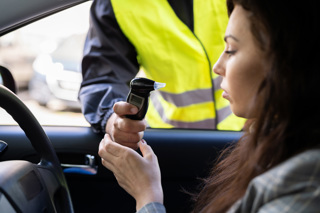Two-fifths (42%) of those under-34 say they have driven their return commute when very tired compared to a quarter of all drivers, according to new research from the AA Charitable Trust.
A third of young drivers have also driven to work very tired compared to a sixth of all drivers.
This means, getting behind the wheel after an early start or late finish at work is the most common time drivers under-34 admit drowsy driving. But, across all drivers, long motorway journeys are the most common time they drive tired with a third (30%) saying they have done so.
The latest road casualty statistics show drowsy drivers contributed to 53 fatal and 351 serious crashes in 2017. It is widely accepted the true figure for fatigue related crashes is much higher due to under-reporting, says the AA Charitable Trust.
In fact, it is estimated that up to 25% of fatal accidents are caused by drivers who have fallen asleep at the wheel.
The poll asked: Under which, if any of the following circumstances, would you say you have driven despite feeling very tired?
|
|
All drivers |
Young drivers (18-to-34) |
|
A long motorway journey |
30% |
40% |
|
A late finish drive from work |
25% |
42% |
|
An early start drive to work |
16% |
35% |
|
A late-night return from an airport in the UK or abroad |
13% |
16% |
|
Driving home from a UK holiday |
12% |
15% |
Regionally, drivers in Northern Ireland were the most likely to say a late finish (30%) or an early start (19%) at work meant they had driven when very tired.
Overall, drivers in the North East were the most likely to say they had never driven when very tired (46%); while drivers in Northern Ireland were the least likely to agree with this (36%).
Edmund King, director of the AA Charitable Trust, said: “Young people make up a disproportionate part of the so-called gig economy. The pressures this type of work places on them may explain partly why they are trying to push on through tiredness on their commutes. But, attempting to plough on through tiredness is very dangerous. The only long-term remedy for tiredness is sleep itself.
“Fatigue related crashes tend to be very serious because if the driver is asleep they do not steer away from a collision or brake. On motorways, our fastest roads, this tends to be catastrophic.”
Last year the AA Charitable Trust launched a Drowsy Driver campaign to remind drivers to be alert to fatigue, warning them that if they find themselves winding down the window or turning up the radio that these are a symptom of tiredness – and not an effective remedy.
Drivers doing these things need to take it as a sign they are too tired and need to stop at the next safe place; have two cups of coffee (or equivalent caffeinated drink) and nap for around 15 minutes.
The campaign features a thought-provoking advert designed to wake drivers up to the dangers of fatigue.
The Drowsy Driver video can be shared and viewed here. More advice about tiredness and driving can be found here.





















Login to comment
Comments
No comments have been made yet.